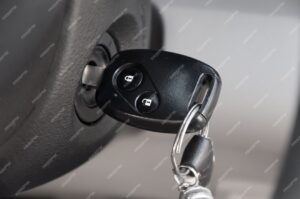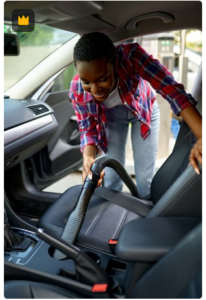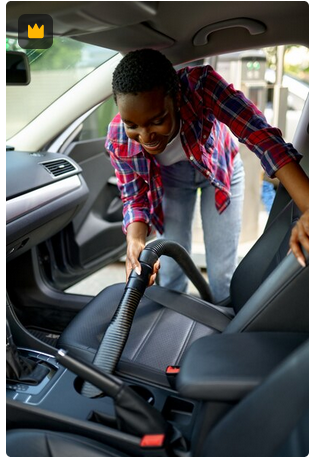Car accidents caused by encounters with animals on the road can result in serious injuries, vehicle damage, and even fatalities. These incidents are not only distressing for drivers and passengers but also pose a significant threat to wildlife populations. To mitigate these risks, it is crucial to understand how to prevent car accidents involving animals.
This comprehensive guide will provide you with valuable insights, practical tips, and effective strategies to enhance road safety and minimize the likelihood of such accidents occurring.
I. Understanding the Risks:
1. Wildlife Habitat Awareness:
– Familiarize yourself with the local wildlife population and their habitats.
– Research areas where animal-vehicle collisions are more likely to occur.
– Be especially cautious when driving near forests, national parks, or rural areas.
2. High-Risk Time Periods:
– Animals are more active during dawn, dusk, and nighttime hours.
– Exercise extra caution and maintain lower speeds during these times.
– Use high beams judiciously, but remember to dim them for oncoming traffic.
II. Defensive Driving Techniques:
1. Maintain a Safe Speed:
– Always adhere to posted speed limits, especially in known wildlife crossing zones.
– Reduce your speed in areas with limited visibility, curves, or densely populated wildlife.
2. Stay Alert and Scan the Road:
– Keep your eyes on the road at all times, scanning for any signs of wildlife movement.
– Pay attention to reflective eyes, roadside signs warning of animal crossings, or carcasses on the road.
3. Increase Following Distance:
– Maintain a safe distance from the vehicle ahead to allow for sudden stops or animal crossings.
– Create ample braking time to avoid collisions if an animal darts onto the road unexpectedly.
III. Wildlife-Specific Precautions:
1. Large Animals (Deer, Elk, Moose, etc.):
– Be aware that deer are most active during mating season (October to December).
– Use caution near open fields or forest edges, where large animals may graze or cross the road.
– If you spot one animal, assume there may be more nearby, as they often travel in groups.
2. Small Animals (Squirrels, Rabbits, etc.):
– Small animals can dart across the road unexpectedly, increasing the risk of accidents.
– Reduce speed and give them time to move out of harm’s way.
– Do not swerve abruptly or make unsafe maneuvers to avoid small animals.
3. Birds:
– Birds may fly across the road, particularly in rural areas or near bodies of water.
– Stay focused and maintain your speed, as braking for birds in flight can be dangerous.
IV. Vehicle Maintenance and Safety Measures:
1. Keep Headlights Clean:
– Regularly clean your vehicle’s headlights, ensuring maximum visibility at night.
– Consider using headlight restoration kits if they appear hazy or foggy.
2. Check and Adjust Mirrors:
– Ensure that your mirrors are properly aligned to minimize blind spots.
– Adjust them to cover all necessary angles and maximize your field of vision.
3. Install Animal Deterrent Devices:
– Consider adding animal deterrent devices to your vehicle, such as deer whistles or ultrasonic emitters.
– These devices emit sounds that can alert animals to your approach and encourage them to stay away.
Summary:
Preventing car accidents caused by encounters with animals requires a combination of awareness, defensive driving techniques, and responsible vehicle maintenance. By understanding the risks associated with wildlife crossings, adopting defensive driving practices, and taking appropriate safety measures, you can significantly reduce the likelihood of accidents and protect both human lives and wildlife populations. Remember, road safety should always be a priority, and by implementing the following tips, you can contribute to a safer driving environment:
1. Stay Informed: Stay updated on local news and reports regarding wildlife movement and road hazards. This information can help you plan your routes and take necessary precautions in high-risk areas.
2. Observe Speed Limits: Adhere to speed limits and adjust your speed according to road conditions and visibility. Slowing down can provide you with more time to react and avoid collisions with animals.
3. Use Wildlife Detection Systems: Consider installing wildlife detection systems in your vehicle. These advanced technologies use sensors and cameras to detect animals near the road, providing early warnings and alerting drivers to potential hazards.
4. Use Roadside Reflectors: Reflective markers and reflector tapes can be installed along roadsides to increase visibility for animals. These markers can help deter animals from crossing busy roads and warn drivers to be cautious.
5. Fence Wildlife Crossing Areas: In areas prone to frequent wildlife crossings, authorities can install wildlife fences along the roadside. These barriers guide animals to designated crossing points and help prevent them from venturing onto the road.
6. Collaborate with Local Authorities: Engage with local wildlife conservation organizations, transportation departments, and wildlife management agencies. Together, you can work towards implementing effective measures, such as wildlife overpasses or underpasses, to provide safe passage for animals.
7. Report Hazards: If you encounter injured or dead animals on the road, report them to the appropriate authorities. Prompt removal of animal carcasses can help prevent further accidents by reducing the attraction of scavengers and preventing distraction to drivers.
8. Practice Responsible Waste Disposal: Improper disposal of garbage can attract animals to roadsides, increasing the risk of accidents. Dispose of waste properly and encourage others to do the same, reducing the likelihood of animals approaching roadways.
9. Be Prepared for Emergencies: Despite all precautions, accidents can still occur. Have an emergency kit in your vehicle, including a first aid kit, flares, and emergency contact numbers. Knowing how to respond in a calm and efficient manner can make a crucial difference.
By incorporating these preventive measures into your driving routine, you can significantly reduce the likelihood of car accidents caused by encounters with animals. Remember, being a responsible driver involves not only protecting yourself and your passengers but also respecting and preserving the wildlife that shares our planet. Stay vigilant, drive cautiously, and prioritize road safety at all times.
Conclusion:
In conclusion, preventing car accidents caused by animals requires a combination of awareness, responsible driving practices, and collaboration with authorities and wildlife conservation organizations. By implementing the strategies outlined in this comprehensive guide, you can minimize the risks associated with wildlife encounters on the road, ensuring the safety of both humans and animals. Let us work together to create a harmonious coexistence between motorists and wildlife, fostering a safer and more sustainable future for all.











+ There are no comments
Add yours